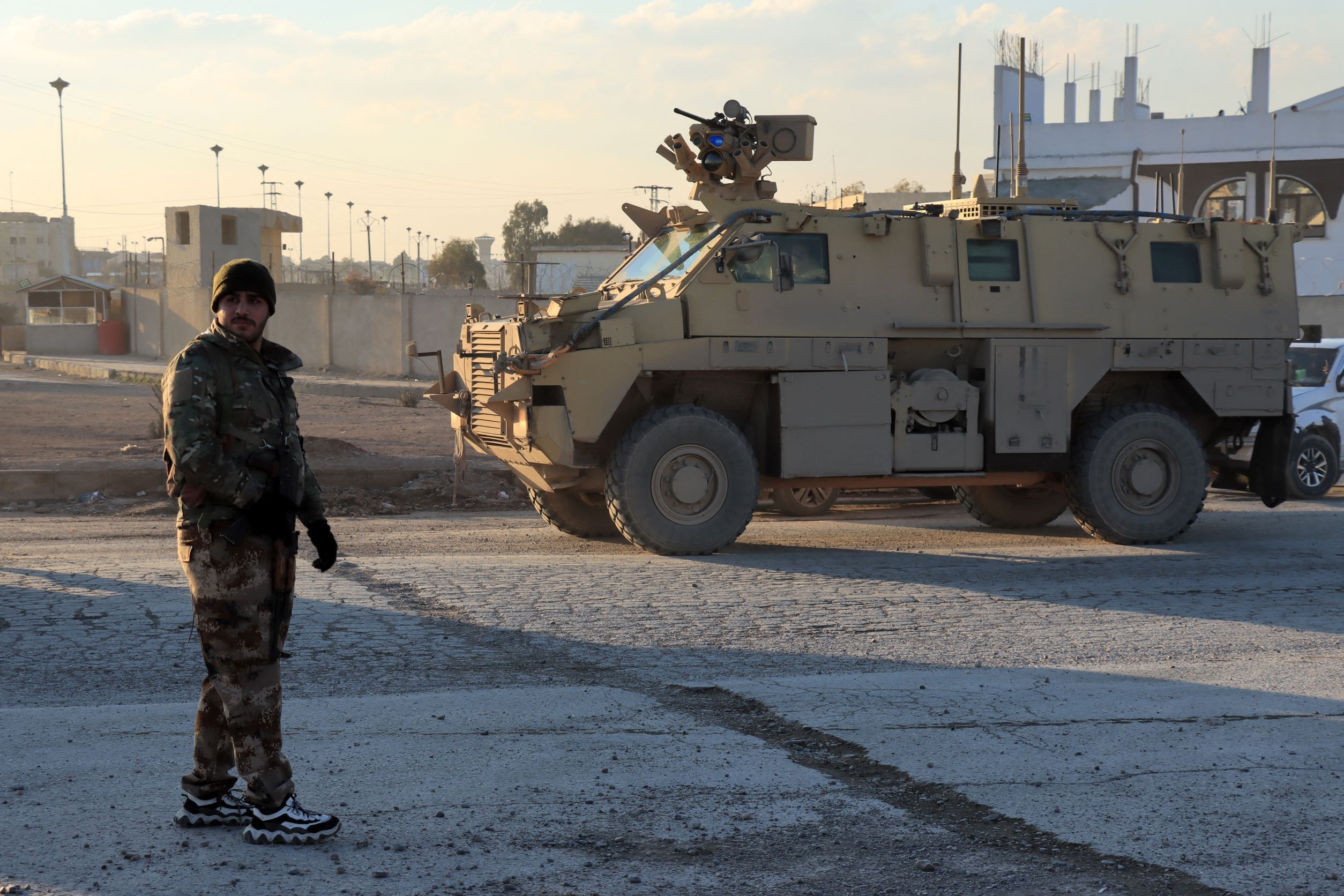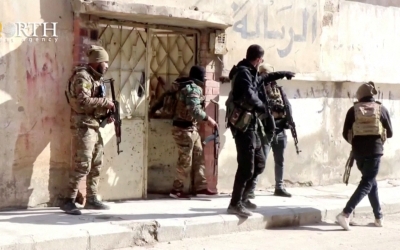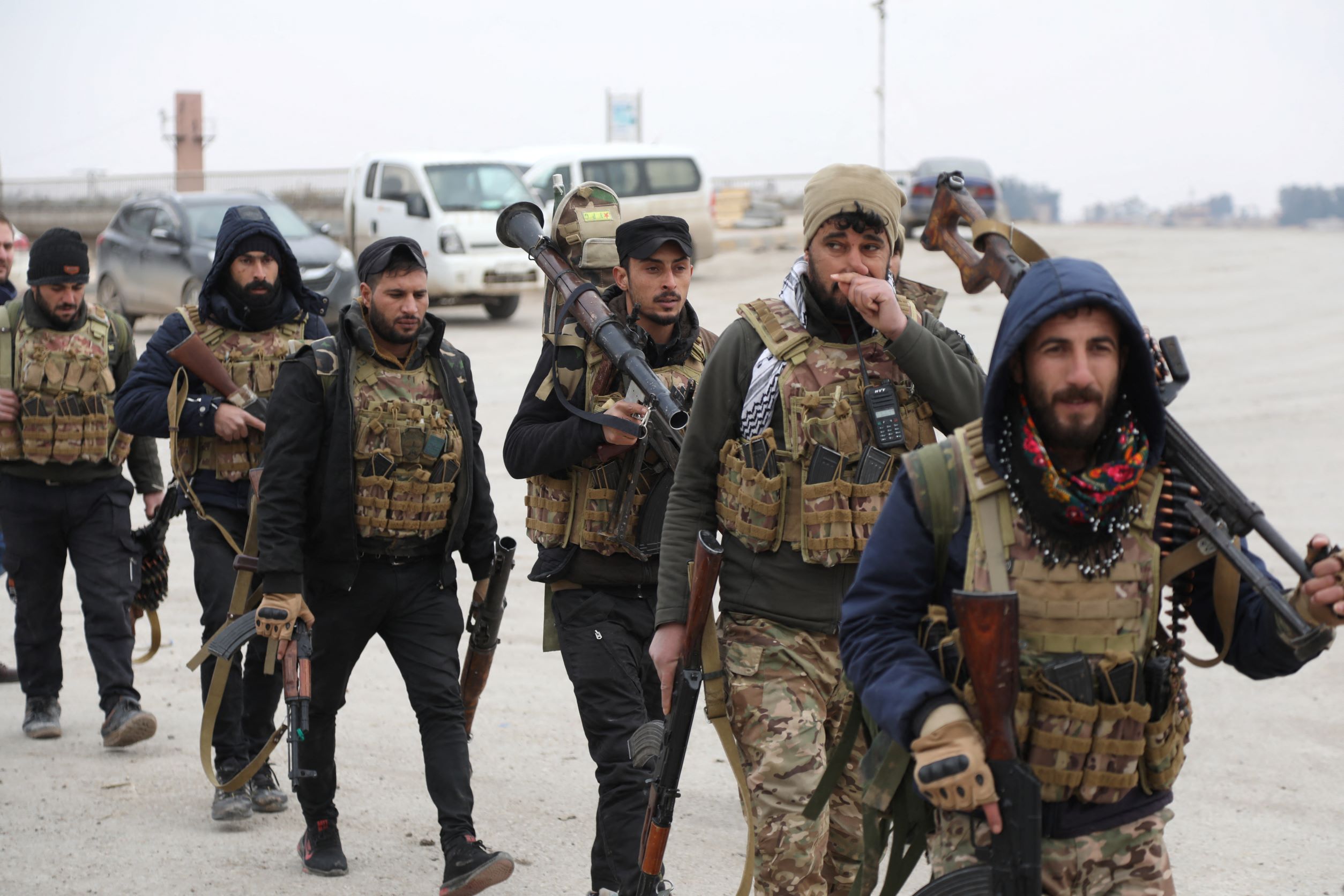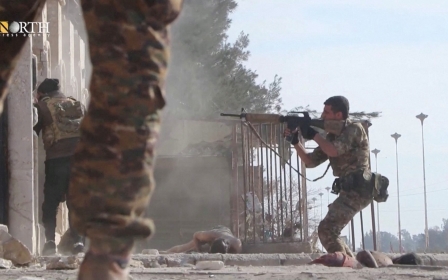Syria: Kurdish-led forces storm Hasakah prison as fight with Islamic State continues

Kurdish-led forces stormed a prison in the northern Syrian city of Hasakah on Tuesday, as they attempted to wrestle back control of the facility from the Islamic State (IS) group.
The Syrian Democratic Forces (SDF) said in a statement that they had retaken a building block of eight dormitories inside Ghwayran prison - also known as al-Sinaa prison - and recaptured some 550 prisoners, five days after hundreds of IS fighters attacked the facility as part of a brazen attempt to free their captured comrades.
Videos published by the SDF showed armoured vehicles entering the prison, which previously served as a school, while another showed fighters from the allied Women's Protection Units (YPJ) combing buildings at the sprawling site.
"The situation is calm now. Yesterday evening, a number of prison staff were released. The situation is calm and some IS fighters continue to surrender themselves [to the SDF]," Aziz Suleiman, a resident in Hasakah's Salihiye neighbourhood told Middle East Eye.
New MEE newsletter: Jerusalem Dispatch
Sign up to get the latest insights and analysis on Israel-Palestine, alongside Turkey Unpacked and other MEE newsletters
Fighting first engulfed the prison on Thursday, when IS fighters rammed two explosives-packed vehicles into the facility in one of the boldest attacks by the group in the region in recent years.
Fighting around the prison, which is thought to have housed more than 3,500 suspected members of the group, is reported to have left hundreds dead.
Save the Children said on Monday that they had evidence of multiple child deaths and casualties at the prison.
Sources in the SDF-linked Autonomous Administration of North and East Syria (AANES), which controls much of northeastern Syria, indicated that there were hundreds of boys being held by IS as human shields, which included more than 100 "non-Arabs".
Clara Moore, a Syria-based researcher at the Rojava Information Center (RIC), told MEE that minors were among "those wounded receiving care from the SDF paramedics within the prison".
Suleiman also added that a number of minors were now in SDF hands.
Thomas Schmidinger, an Austrian expert on Syrian Kurds who regularly visits northeast Syria, told MEE that he was in contact with civilians who live close to the prison.
"They say that until 2 am they heard the fights from the prison but now it is much calmer. For them, the recent days were very hard as they had to hide in their house and they ran out of heating oil. So they were freezing. Moreover, there was no electricity for days and they were extremely afraid of IS because they had the impression 'they are everywhere'.
"Sometimes I could hear the sound of the fighting in the background of their voice messages. But now they say it's much quieter. At least where they are."
Surrender
According to the UN, upwards of 45,000 Hasakah residents have been forced to flee their homes due to the fighting, while the SDF has locked down large parts of the city.
The majority of those interned at the prison were captured by the SDF - with US support - in late 2018 and early 2019, as they mopped up what were thought to be the last outposts held by IS.
Moore said those recaptured were now being "split up into prisons throughout northeast Syria" while SDF commandos were engaging IS prisoners who were "continuing to defend parts of the prison".
Local journalists said on social media that IS snipers were still active near the prison, close to where reporters had gathered.
While the SDF has claimed that the prison is "completely surrounded", they said they were taking the operation slowly in order to minimise casualties, particularly among children.
"We are more interested in liberating prisoners and protecting our people than eliminating [IS] mercenaries," Ferhad Shami, head of the SDF media centre, was quoted as saying by the Rojava Information Centre.
'Wake-up call'
While most analysts expect the SDF to retake control of the prison, the issue of the Syrian Kurds being stuck with thousands of local and foreign IS detainees will likely continue to be a cause of consternation.
Particular concern has been raised about the plight of more than 700 children, some of whom have been detained for as long as three years and come from dozens of foreign countries.
Both the SDF and international rights groups have called on foreign countries to repatriate the children of suspected IS fighters and supporters that are detained in SDF-run prisons.
So far, however, many countries have been reluctant to take back their nationals, fearing a domestic backlash and the potential for the rise of sleeper cells.
Luqman Ahmi, a spokesperson for AANES, told MEE that although the SDF - with support of the US-led coalition - officially defeated IS in 2019, there had been little international follow-up support.
"The AANES on many occasions appealed to the international community for support with regards to the prisons holding IS prisoners in northeast Syria as well as for the al-Hol Camp where IS-affiliated families are kept. However, everyone turned a blind eye to this," he said.
'This should be a wake-up call for the international community '
- Letta Tayler, Human Rights Watch
"IS itself used those children as human shields in order to escape and to prevent the SDF forces from controlling al-Sinaa prison."
He underlined that the Syrian Kurdish-led administration and the SDF needed greater international support and exemptions from sanctions imposed on the Syrian government.
"If we have been able to take the situation under control and have IS attackers surrounded this time, it is not guaranteed that we will be able to do so if IS continues to pose threats," he warned.
The New York Times has reported that while Kurdish-led authorities run a rehabilitation centre for children of suspected IS members, it only has space for around 150 people.
When they finish the course, the Syrians are released but non-Syrians are returned to prison.
Letta Tayler, associate director of the crisis and conflict division at Human Rights Watch, said the breakout was an entirely predictable crisis "that could have been prevented had countries brought home these boys who never should have been indefinitely held in these prisons in the first place".
"This is the predictable consequence of home countries outsourcing responsibility for their nationals, including children, to a cash-strapped non-state actor inside a war zone," she said.
"This should be a wake-up call for the international community that it's long past time to bring these children home and the adults too."
Finnish Ambassador Jussi Tanner, who for years has negotiated with the Kurds over repatriations told MEE that when the dust settles after the end of the prison break, “there will be pertinent questions asked in various capitals.”
“Everyone knows this cannot go on. The continued detention of children especially has serious strategic consequences. It has to end, or we will all be less safe," he said.
“This has the potential to change the dynamics of the jihadist insurgency. A tactical defeat for IS may turn out to be a strategic and propaganda victory.”
Middle East Eye delivers independent and unrivalled coverage and analysis of the Middle East, North Africa and beyond. To learn more about republishing this content and the associated fees, please fill out this form. More about MEE can be found here.






